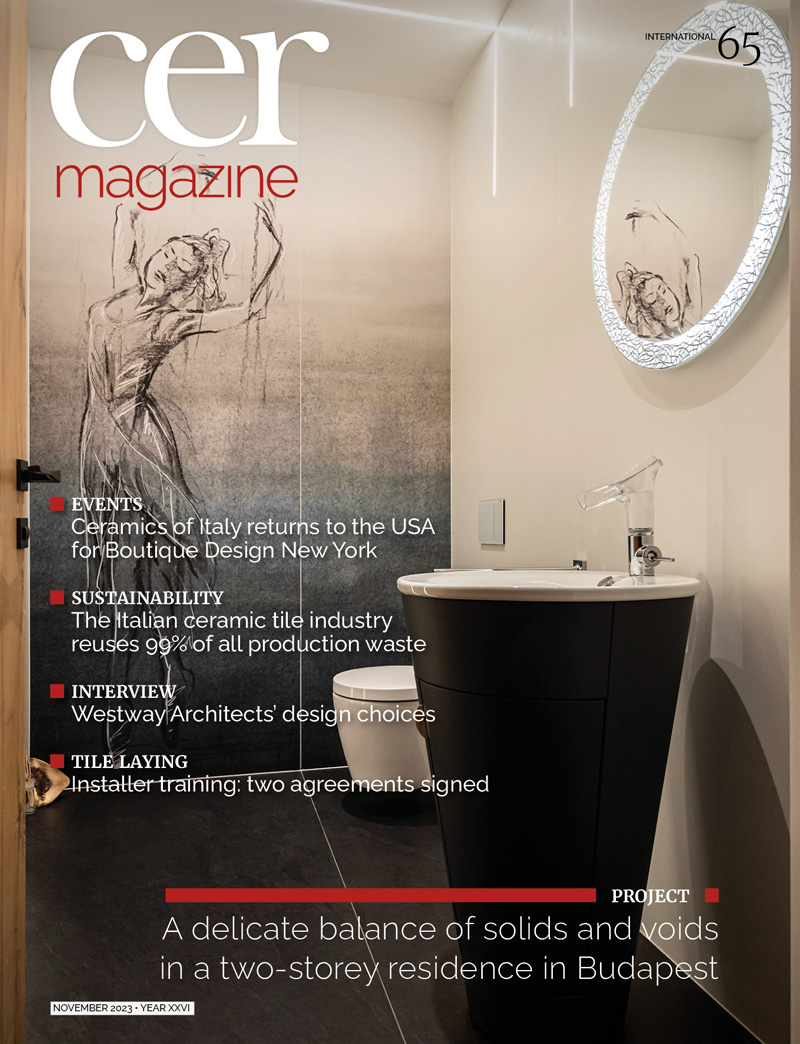The contemporary relevance of Le Corbusier, a century on
Rereading Le Corbusier’s Vers une architecture (Towards a New Architecture) a century after it was first published is a useful cultural and anthropological exercise for today’s ceramic industry. Rather than providing a structured review of one of the seminal texts of modern architecture, the following summary will focus on a few key aspects relevant to ceramic tiles.
Le Corbusier’s concept of the house as a “machine for living in, the temple of the modern family” where everyone can feel at home emphasises the enduring role of the consumer as the true decision-maker. Whether considered as an individual or as a group, the consumer has specific needs in terms of living spaces, which vary by location and the presence of family members or friends. Italian ceramic tiles are well-known for their ability to interpret domestic spaces in a unique way. Their aesthetic versatility and rich palette of colours offer solutions that are distinct from other materials and unmatched by alternative surfaces.
Le Corbusier’s notion of constructive simplicity is “sublimated in the concept of standardization, which in turn derives from mechanisation, the recognition of permanent elements. The precise composition of different elements leads to perfection.” Just as in Le Corbusier’s times, modern architecture needs to engage with industrial production, something that Italian ceramics is able to do thanks to the highest Industry 4.0 standards. Technological systems play a crucial role in material selection, allowing for objective colour verification and ensuring consistent product quality over time. Finally, the modularity of ceramic tiles, many of which come in multiple sizes, allows for a multitude of different installation layouts that creatively cover a wide range of surfaces.
In his book, Le Corbusier extends the dimension of architectural space to buildings, where “vertical and horizontal planes, characterised by bright primary colours, serve to create user-friendly structures. The masterly, correct and magnificent play of masses is brought together in light.” The Italian ceramic tile industry excels at interpreting not only individual rooms but entire buildings, covering different types of architectural envelopes with ceramic surfaces created from different materials in terms of size, thickness, colour and designs. The aptitude of Italian ceramic tiles for total design combining both horizontal and vertical surfaces as well as doors and other furnishings is part of its all-encompassing nature. The ability to respond effectively to the needs of detailed, complex spaces with modular sizes aligns with the aesthetic of functional beauty that is an integral part of Le Corbusier’s philosophy.
November 2023






